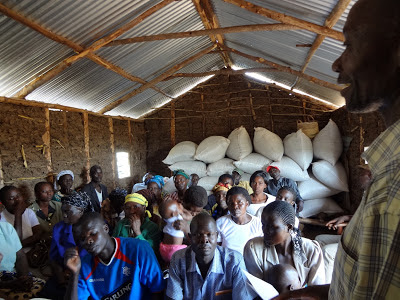 Today being the 29th of January 2013, we were
glad to join Kipingi Processing and Marketing group, in Kipingi area for a
group meeting. Kipingi PMG is a cluster of 14 common interest groups with a
great focus on grain collective banking and marketing. The group has a number
of other activities like farming, processing and micro-finance.
Today being the 29th of January 2013, we were
glad to join Kipingi Processing and Marketing group, in Kipingi area for a
group meeting. Kipingi PMG is a cluster of 14 common interest groups with a
great focus on grain collective banking and marketing. The group has a number
of other activities like farming, processing and micro-finance.
On this day we had a different message to pass on to the
members, for decades, access to poultry vaccine in this area was the greatest challenge
to the local poultry farmers since one could only access it Homa-Bay town
incase he/she needed it. The costing was not any friendly to the farmers in
that one had to spend KES 300 to Homa-Bay to purchase a vaccine for 100 chicks
at KES 100 but today, things have greatly changed and farmers can access the
vaccine every Thursday at Ndhiwa veterinary offices.

 We were also quick to mention on the collective marketing of
poultry, something that the group had already done on cereals and knew its
relevance. An example was even quoted by a member of when they onetime visited
Homa-Bay FTC and since the centre purchases and consumes more than 100 hens per
day, they were asked if they could afford to supply the same number to the
institute but no one could in the entire set. This was an eye opener to the
members and group asked to be trained on the same come 12th February
2013.
We were also quick to mention on the collective marketing of
poultry, something that the group had already done on cereals and knew its
relevance. An example was even quoted by a member of when they onetime visited
Homa-Bay FTC and since the centre purchases and consumes more than 100 hens per
day, they were asked if they could afford to supply the same number to the
institute but no one could in the entire set. This was an eye opener to the
members and group asked to be trained on the same come 12th February
2013.
We sold a lot of ideas also on ICT training, Practical
Action site, blogs creation, development videos, Baobab, activities documentation,
technical inquiries and other online marketing portals plus more. The days
agenda ended at 5.45 pm.
